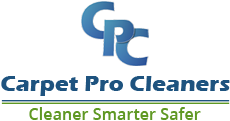HOUSEHOLD CLEANERS TO AVOID?
A surprising number of the most harmful toxins ever created are found right in our own backyard — indeed, right inside your home. We’d love to be the ones to help you detoxify your home and have listed some chemicals below to avoid and help make your home safer again.
The air in our homes is filled with fumes from petrochemical solvents added to cleaners to dissolve dirt. The average household contains anywhere from three to 25 gallons of toxic materials, most of which are in cleaners. No law requires manufacturers of cleaning products to list ingredients on their labels or to test their products for safety. It’s up to you to make sure your home is not only clean, but also nontoxic.
Unfortunately, it isn’t easy to identify which products contain these hazardous ingredients. While cleaners are the only household products regulated by the U.S. Consumer Product Safety Commission under the Federal Hazardous Substances Labeling Act, their sellers aren’t required to reveal these products’ ingredients. These ingredients are considered “trade secrets,” so government regulations are actually designed to protect this proprietary information, not to protect human health or the environment.
When it comes to cleaners, the consumer has little to go on beyond the warning labels that manufacturers are required to put on their products. The labels DANGER, WARNING and POISON give only a very general idea about the seriousness of the unknown substances a product contains. In fact, a New York Poison Control Center study found that 85 percent of product warning labels are inadequate.
These warnings apply only to a product’s immediate health effects; they don’t illuminate what happens when we use them over a long period of time. If you’re using common household cleaning products, you’re likely to encounter the following chemicals (among many others), and the following effects, while cleaning:
- Chlorinated phenols found in toilet bowl cleaners are toxic to respiratory and circulatory systems.
- Diethylene glycol found in window cleaners depresses the nervous system.
- Phenols found in disinfectants are toxic to respiratory and circulatory systems.
- Nonylphenol ethoxylate, a common surfactant (detergent) found in laundry detergents and all-purpose cleaners, is banned in Europe; it has been shown to biodegrade slowly into even more toxic compounds.
- Formaldehyde found in spray and wick deodorizers is a respiratory irritant and suspected carcinogen.
- Petroleum solvents in floor cleaners damage mucous membranes.
- Perchloroethylene, a spot remover, causes liver and kidney damage.
- Butyl cellosolve, common in all-purpose, window and other types of household cleaning products.
If you’re like most people, you’ve probably got more than a few rusty, crusty, almost-empty bottles of cleaning products, along with some dried-out sponges and a furniture-polish-soaked T-shirt hanging around in your mop closet. With a little organization and attention to labels, you can transform it into a complete and efficient collection of green cleaners and other natural products that will not only help keep your house spic-and-span, but also help reduce dangerous indoor toxic vapors created by most conventional household cleaners.
Some cleaners may advertise that they are “environmentally sound” but fail to provide a full list of ingredients. Be wary of these.
The manufacturer that gives you the most information about its product is usually the manufacturer you can trust and certainly the one you want.
Internet Resources
Read and learn about a wide variety of topics, ranging from guidelines relating to the home cleaning products you choose, to the impact of your choices on your health and the environment.

